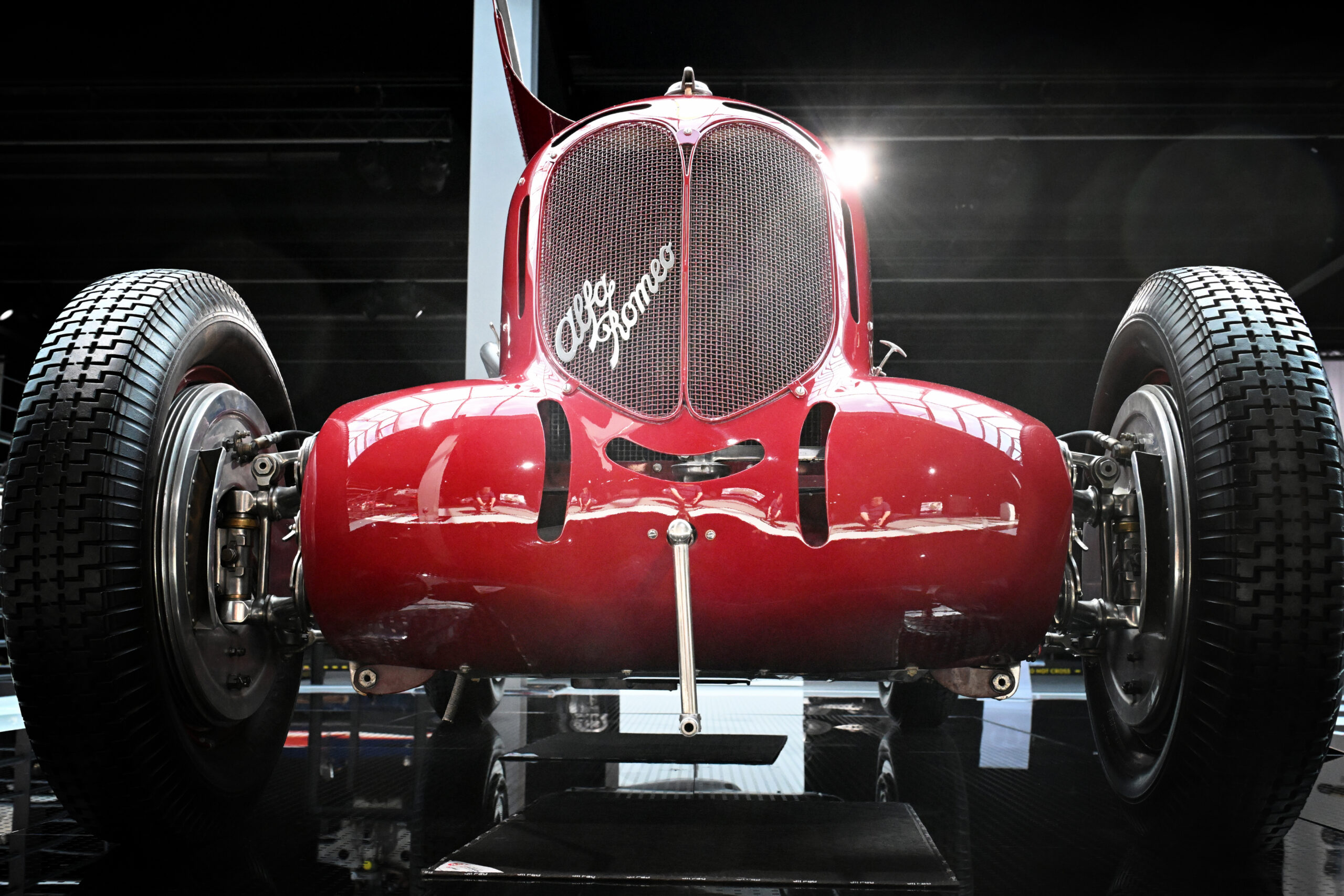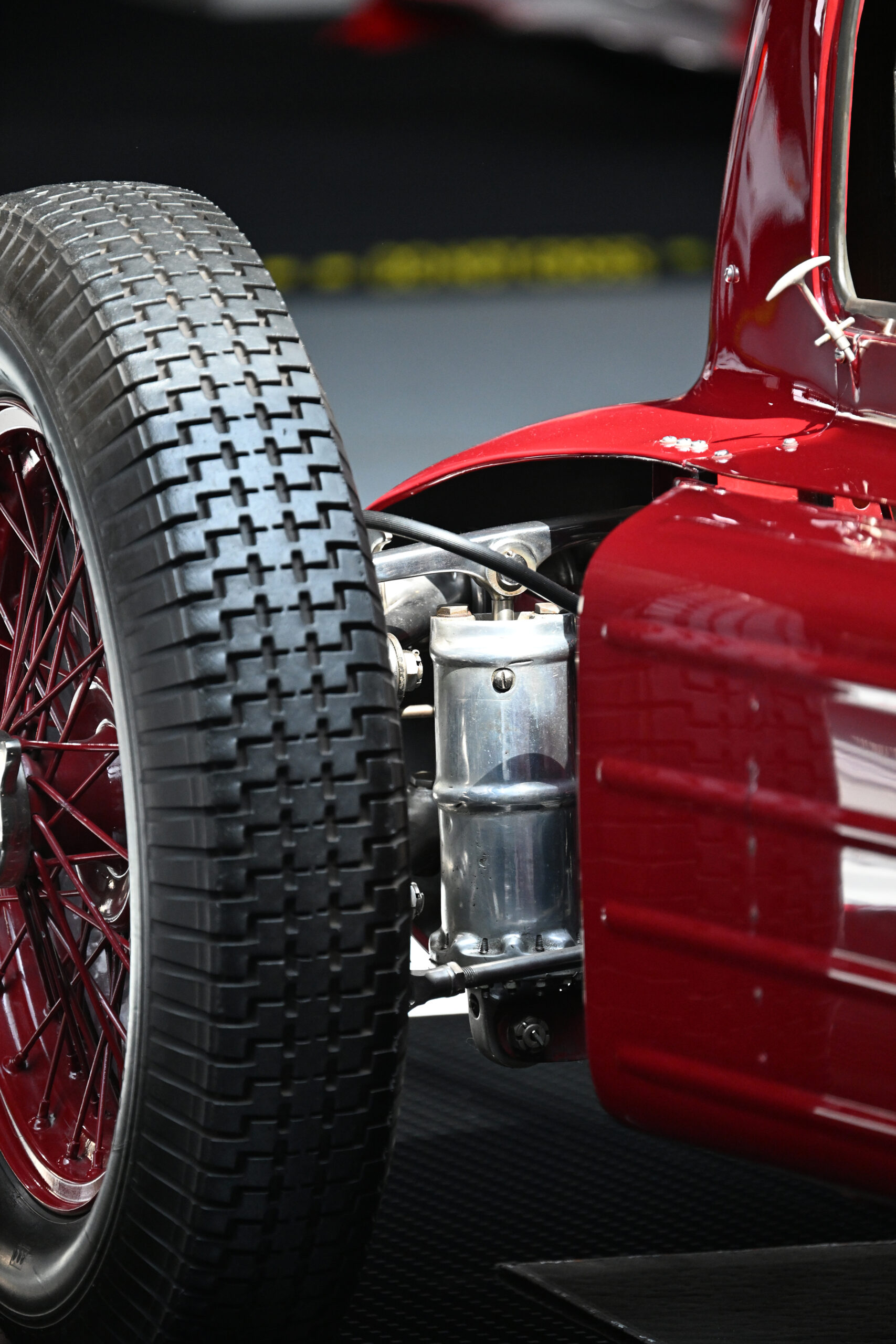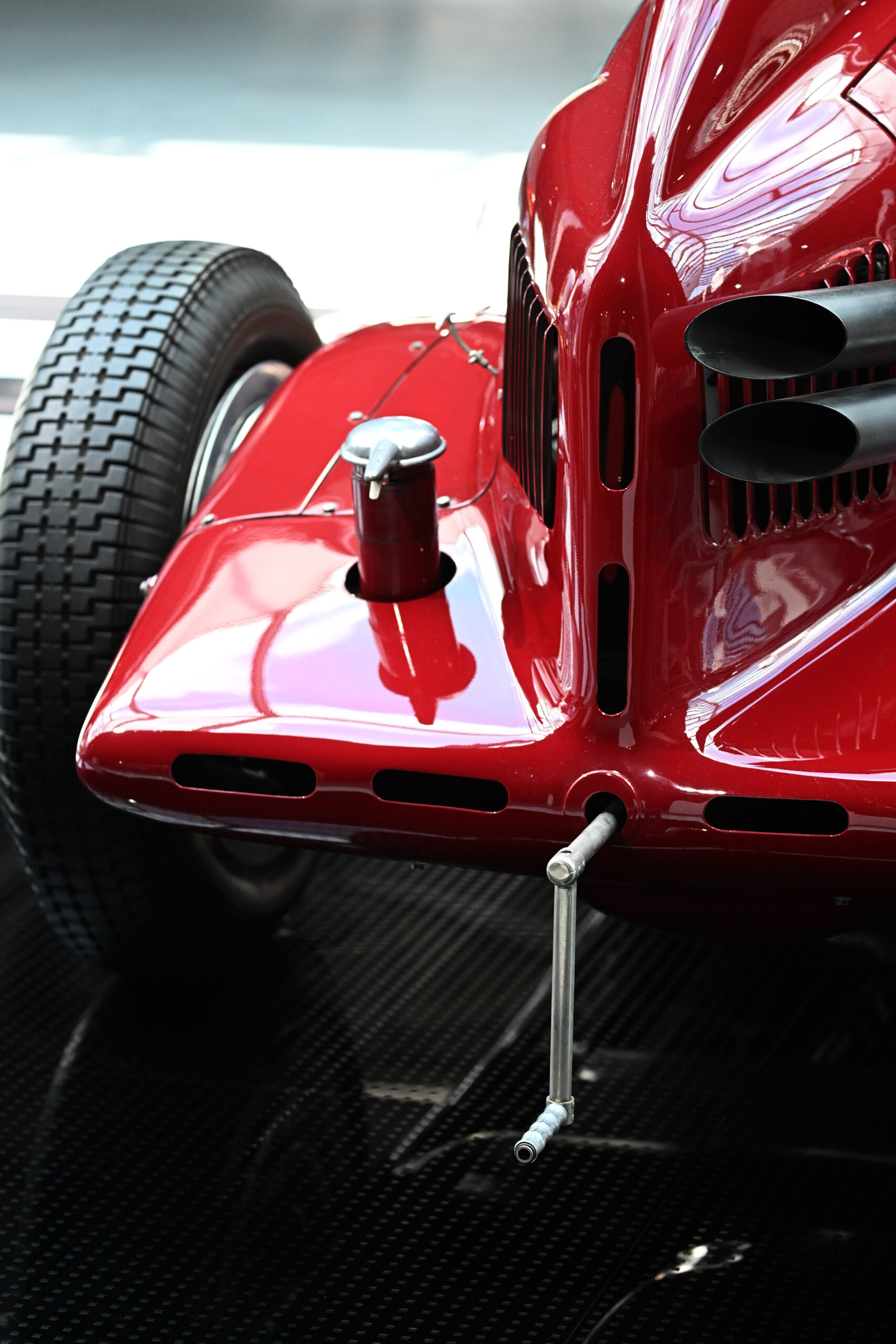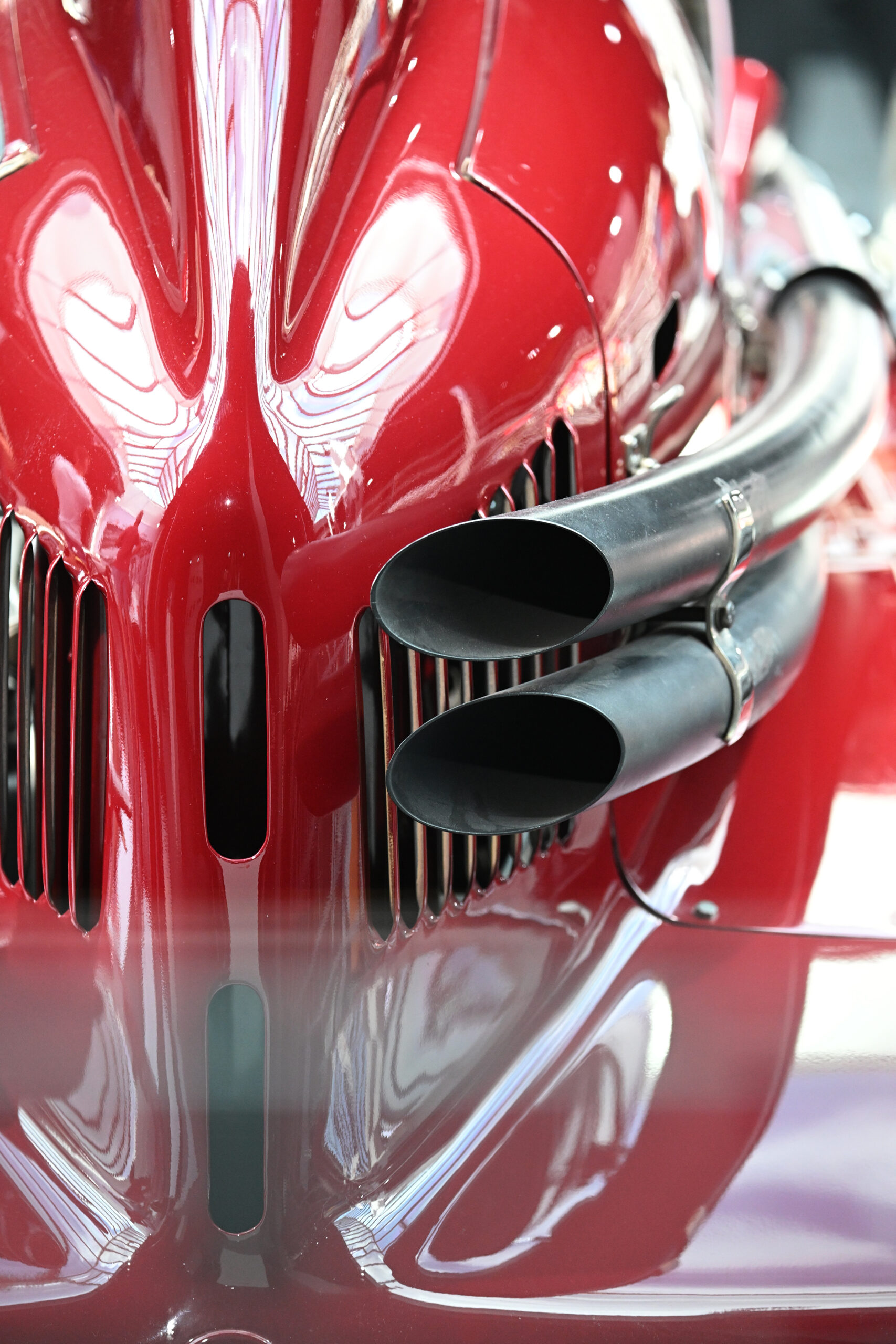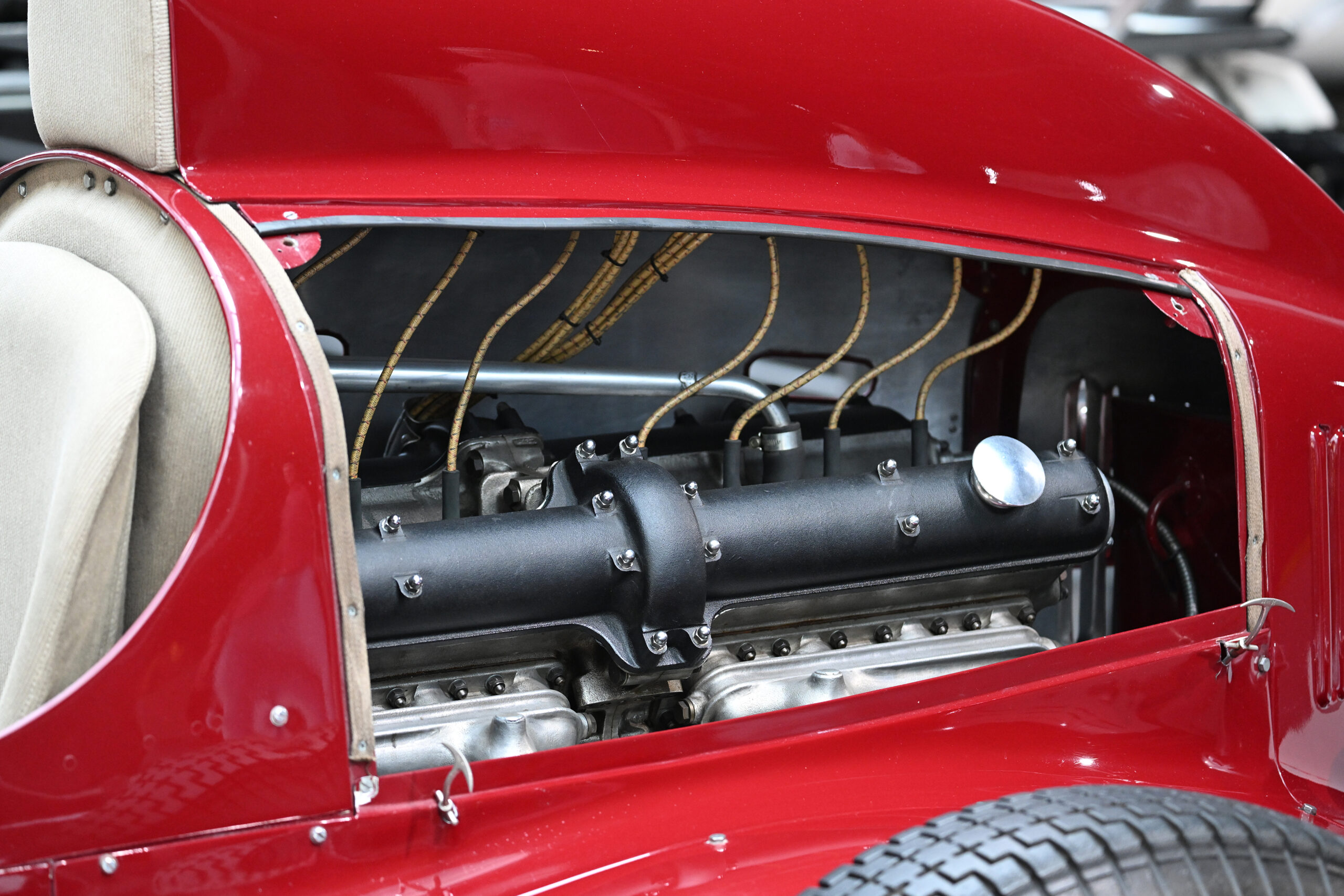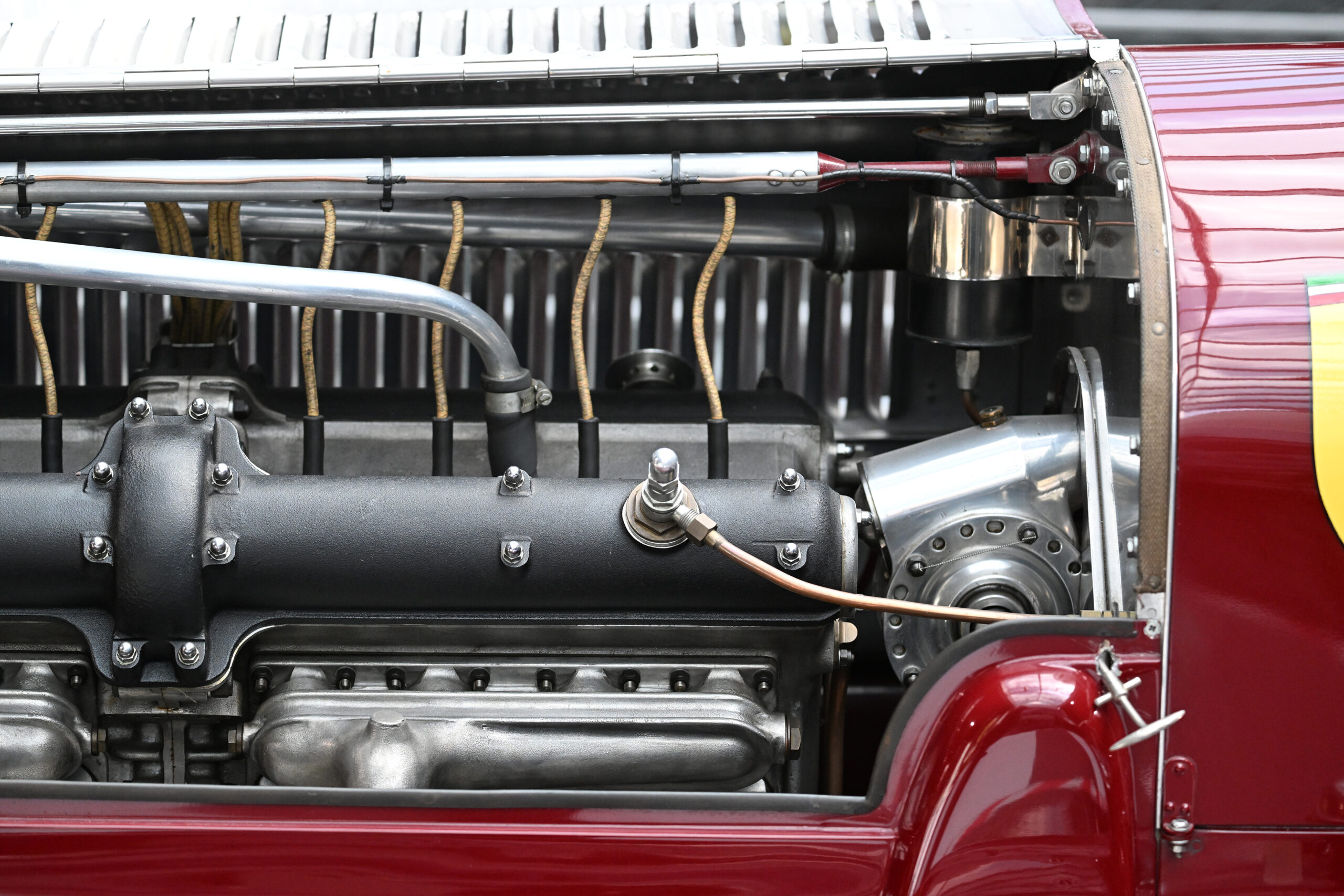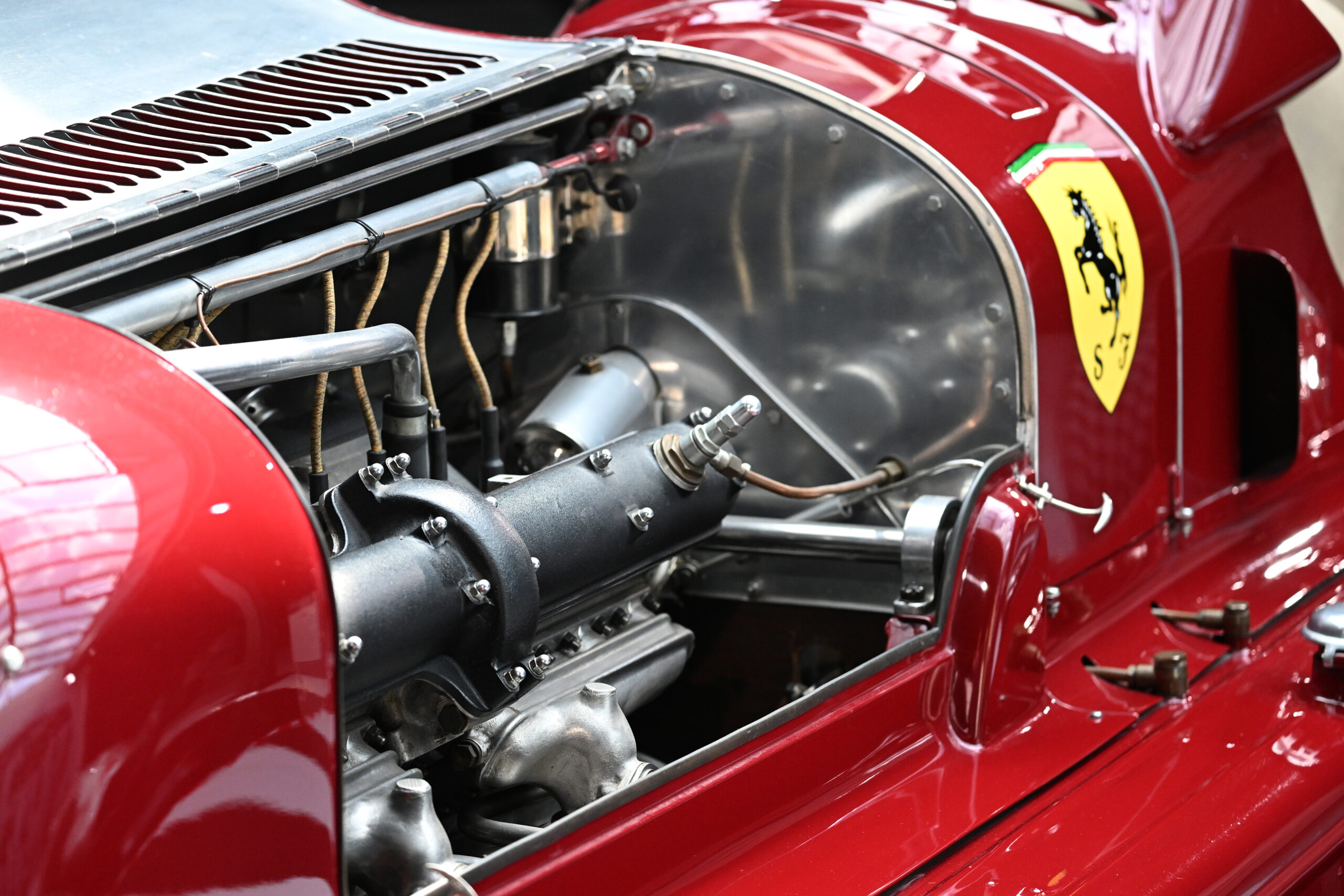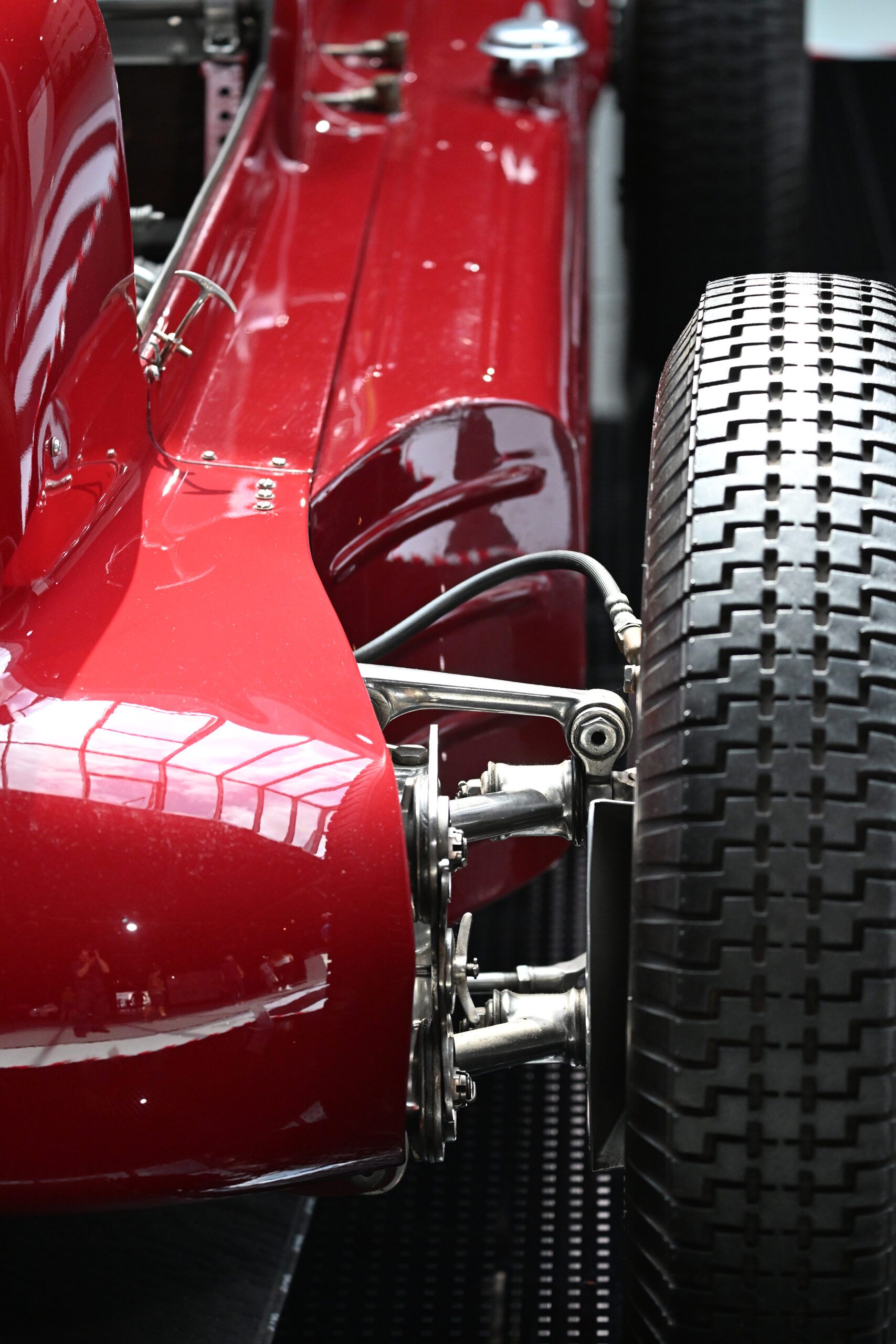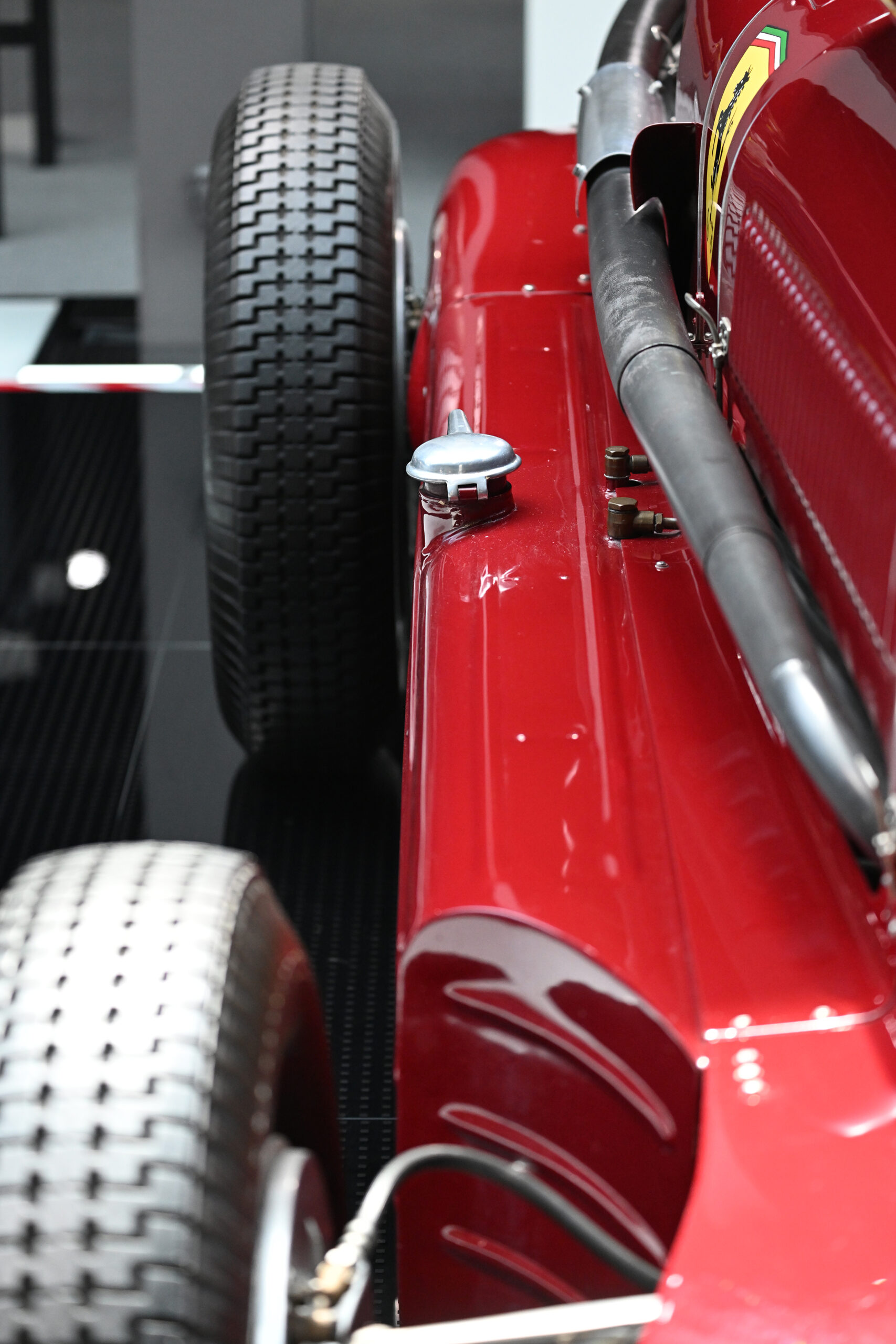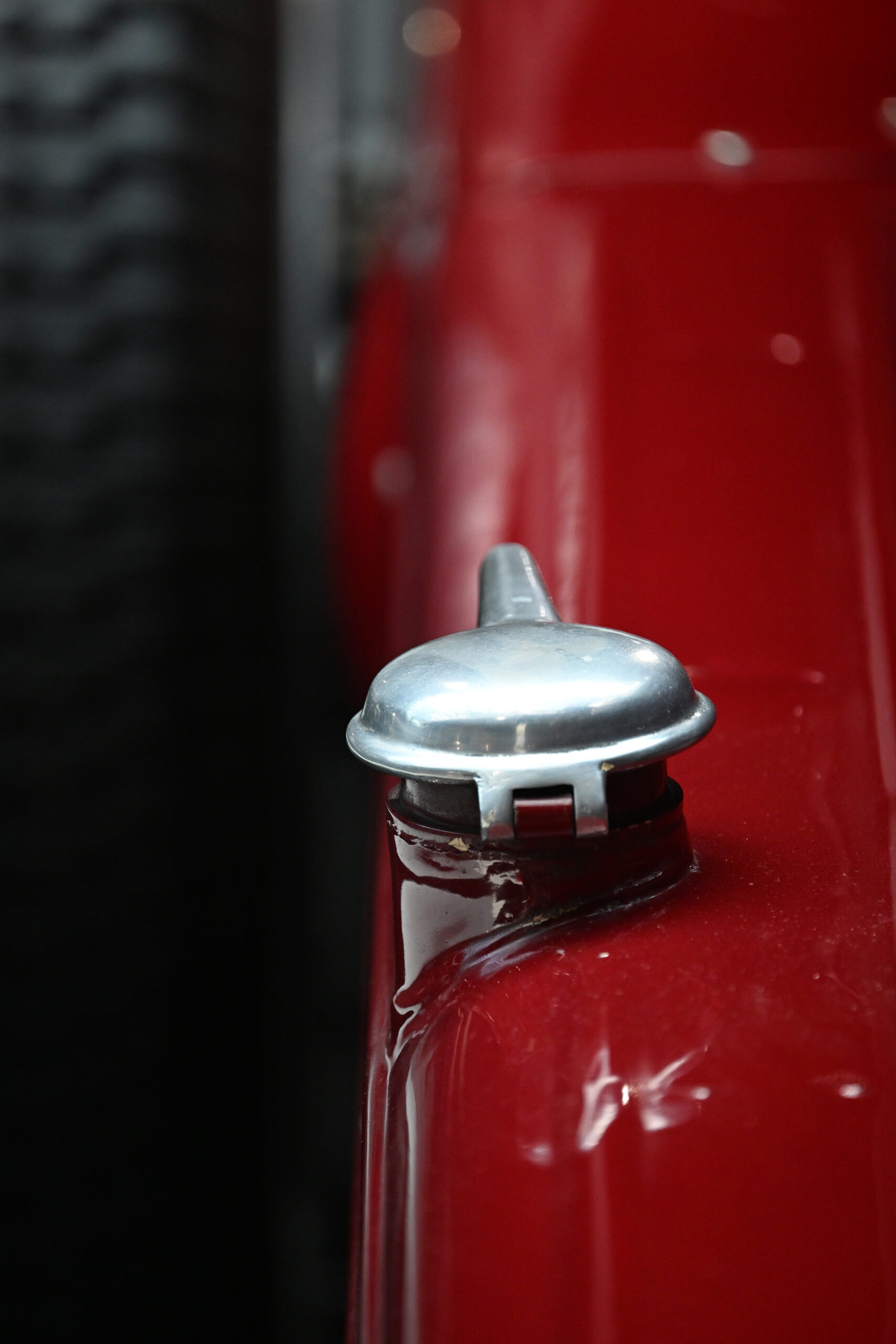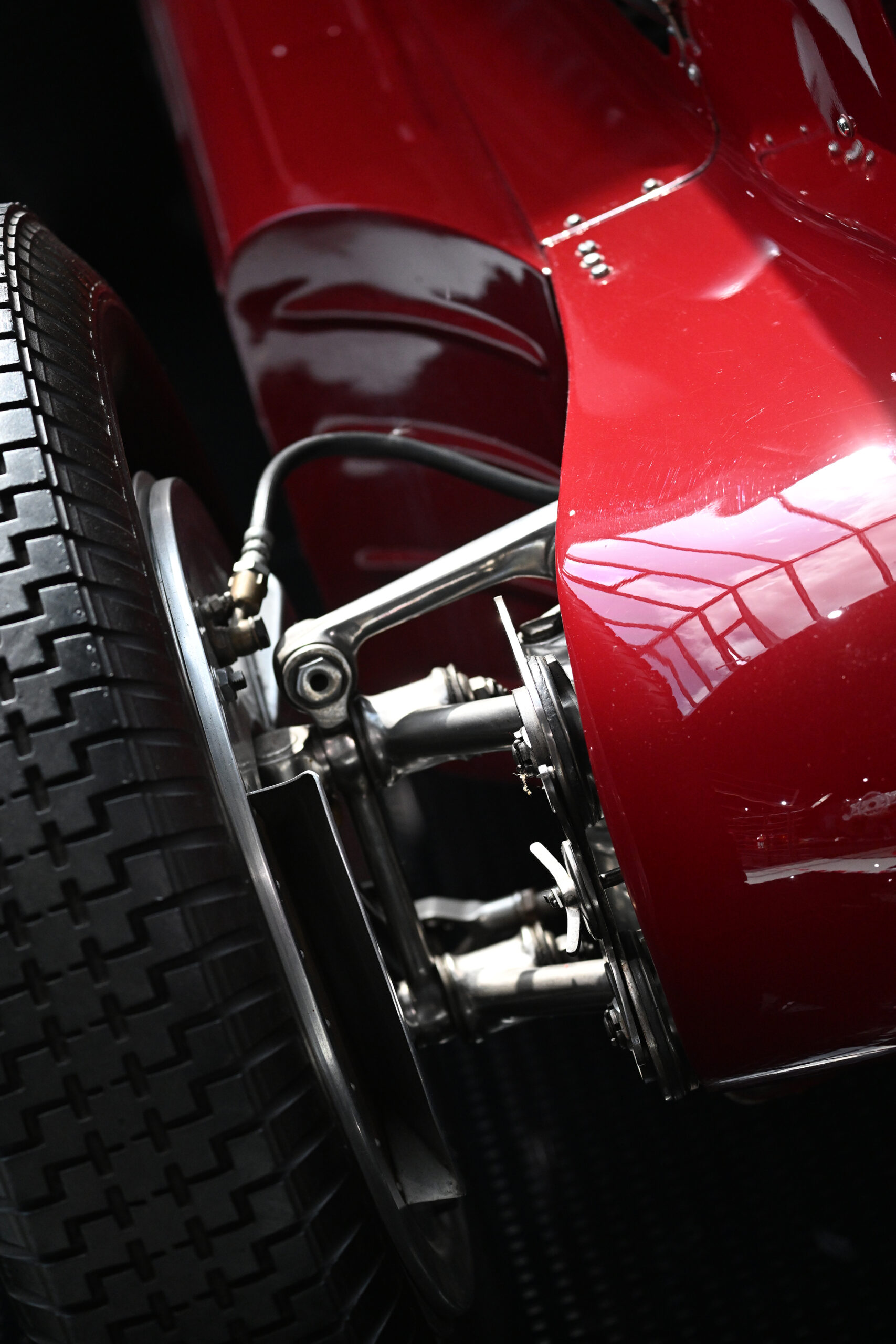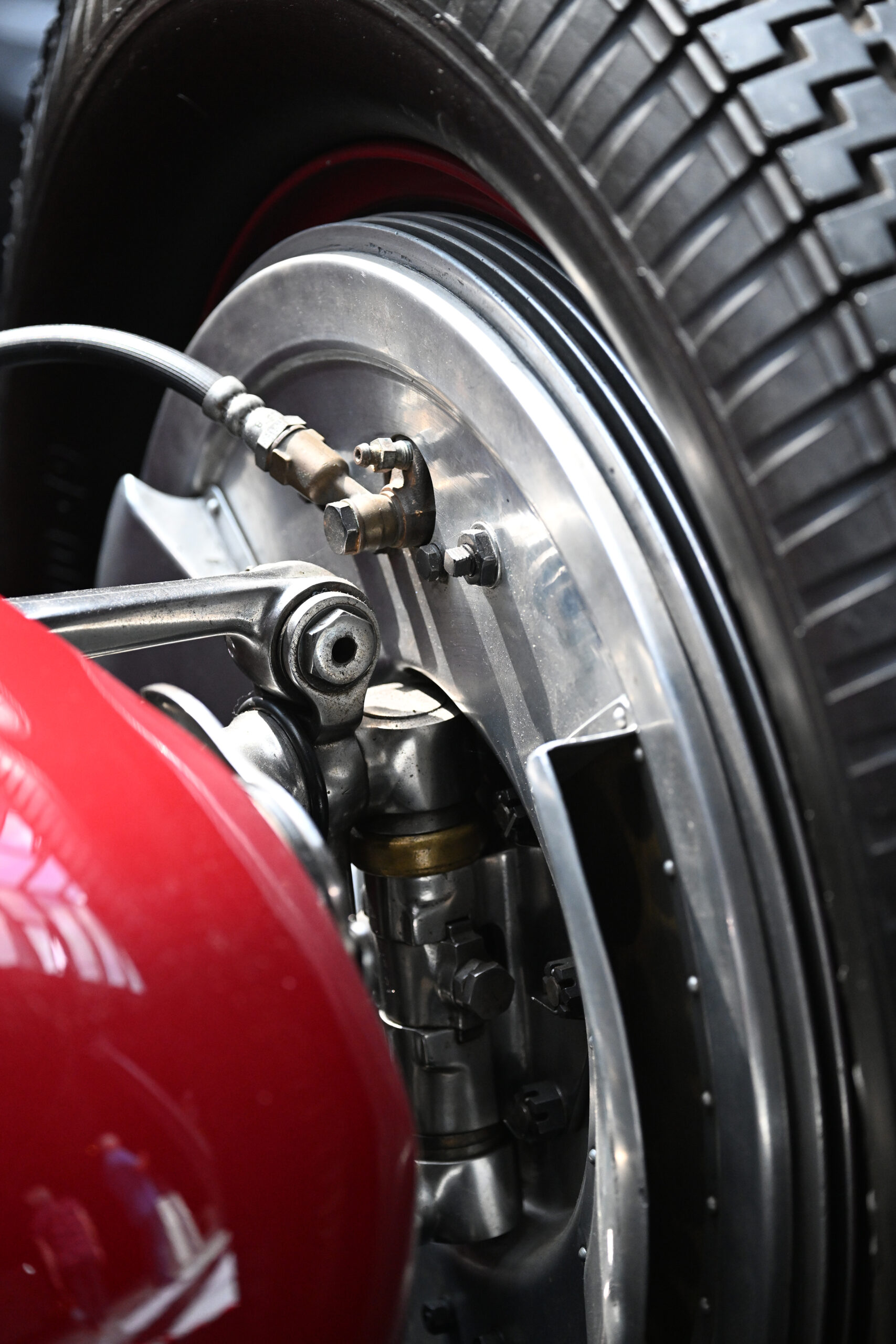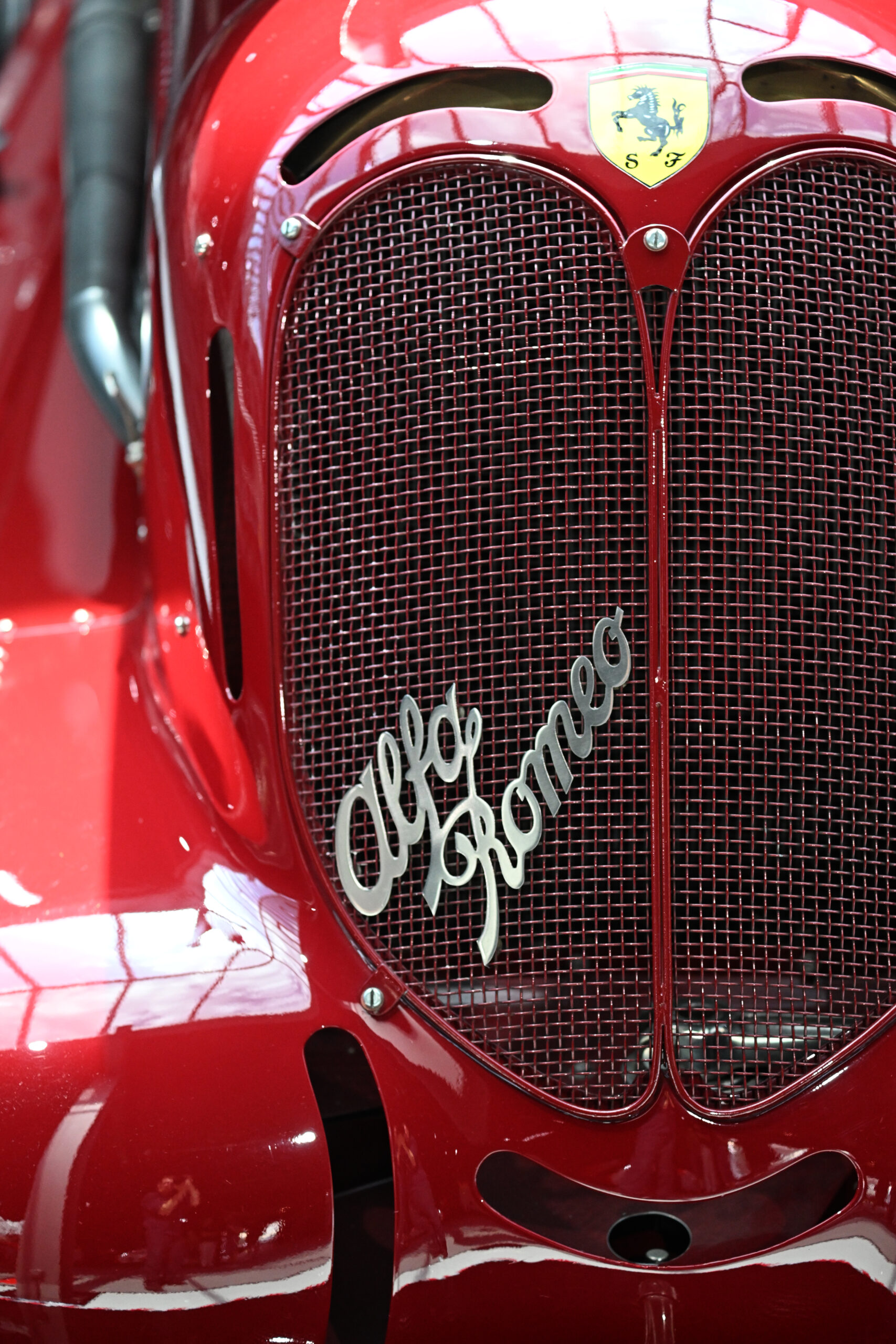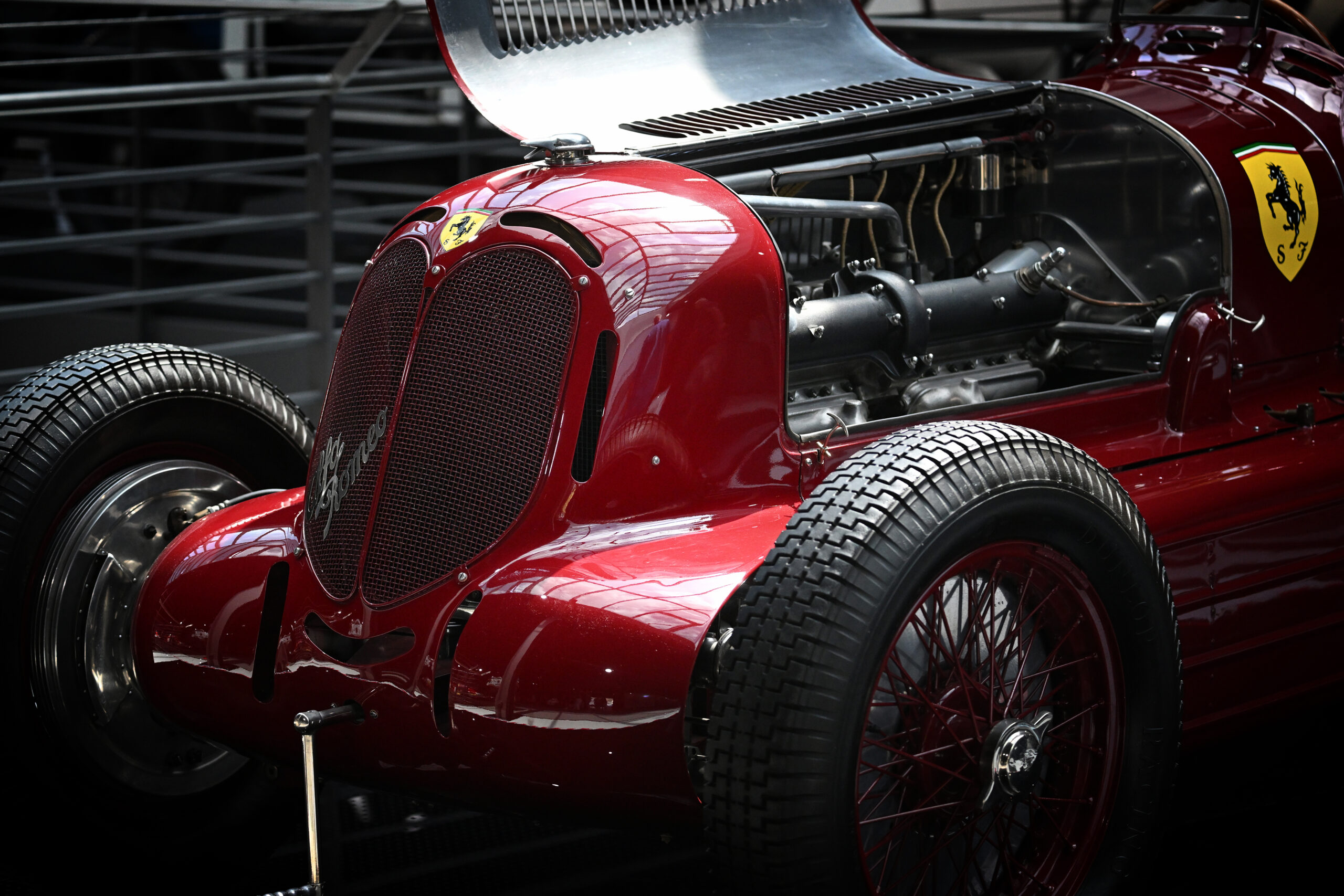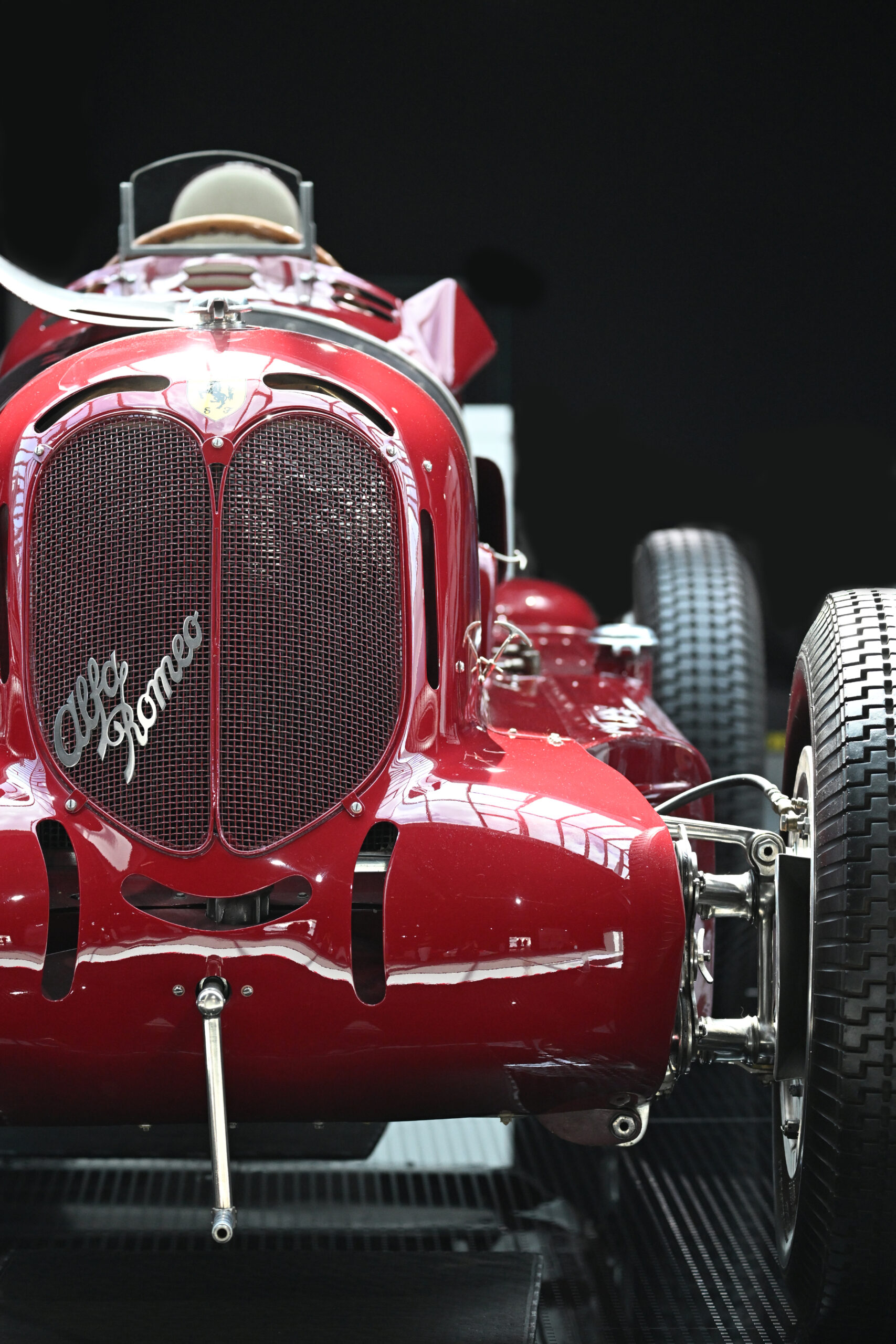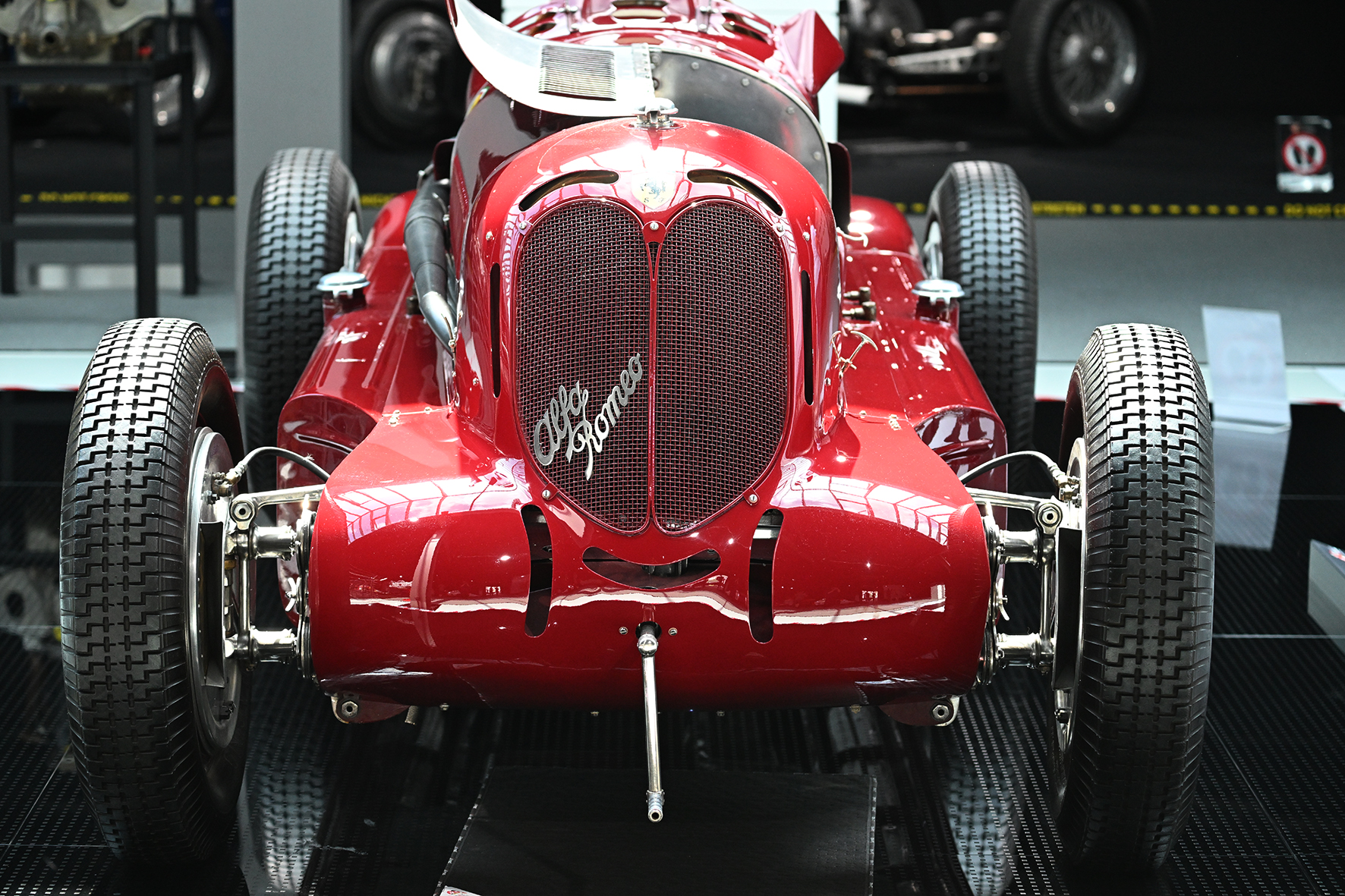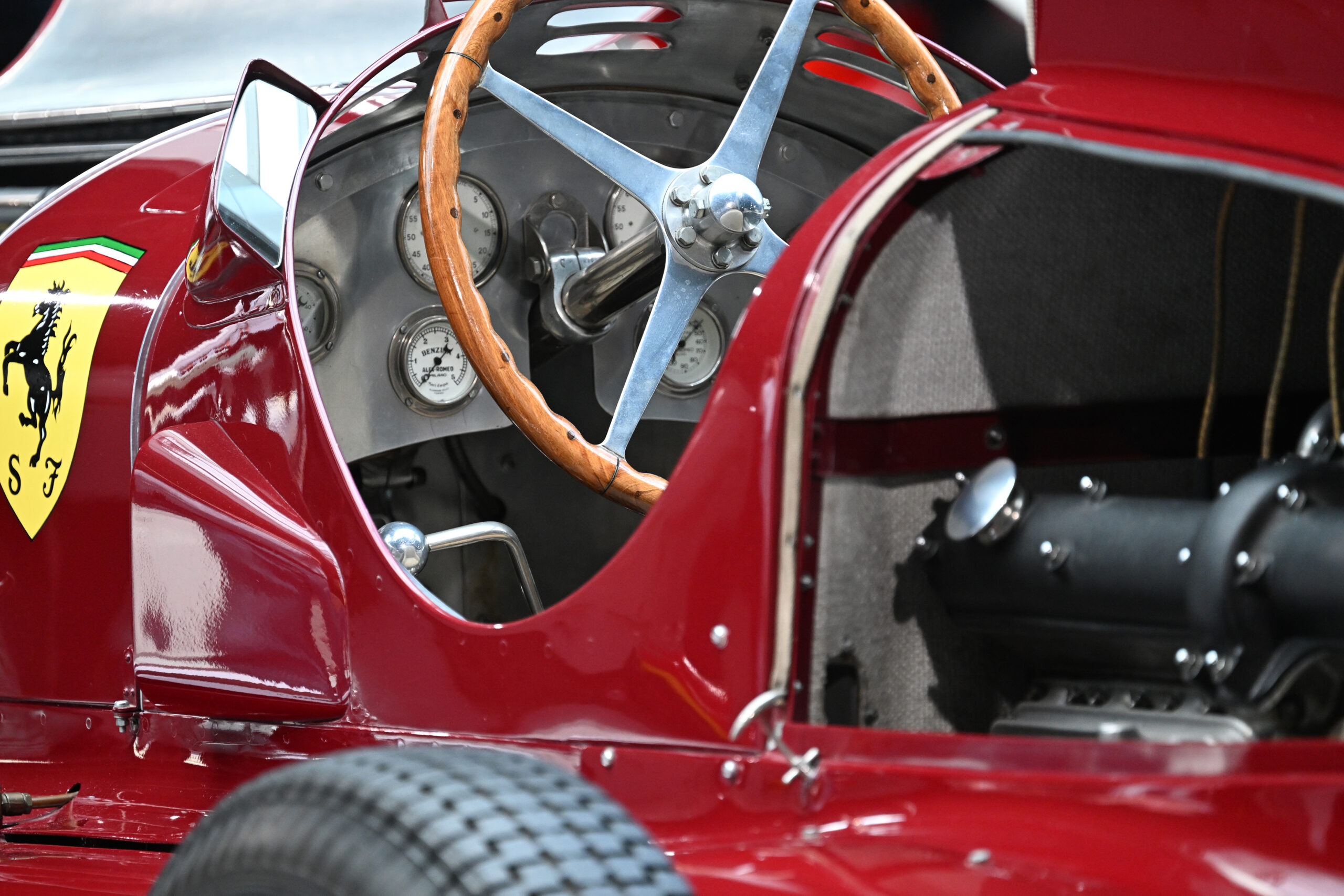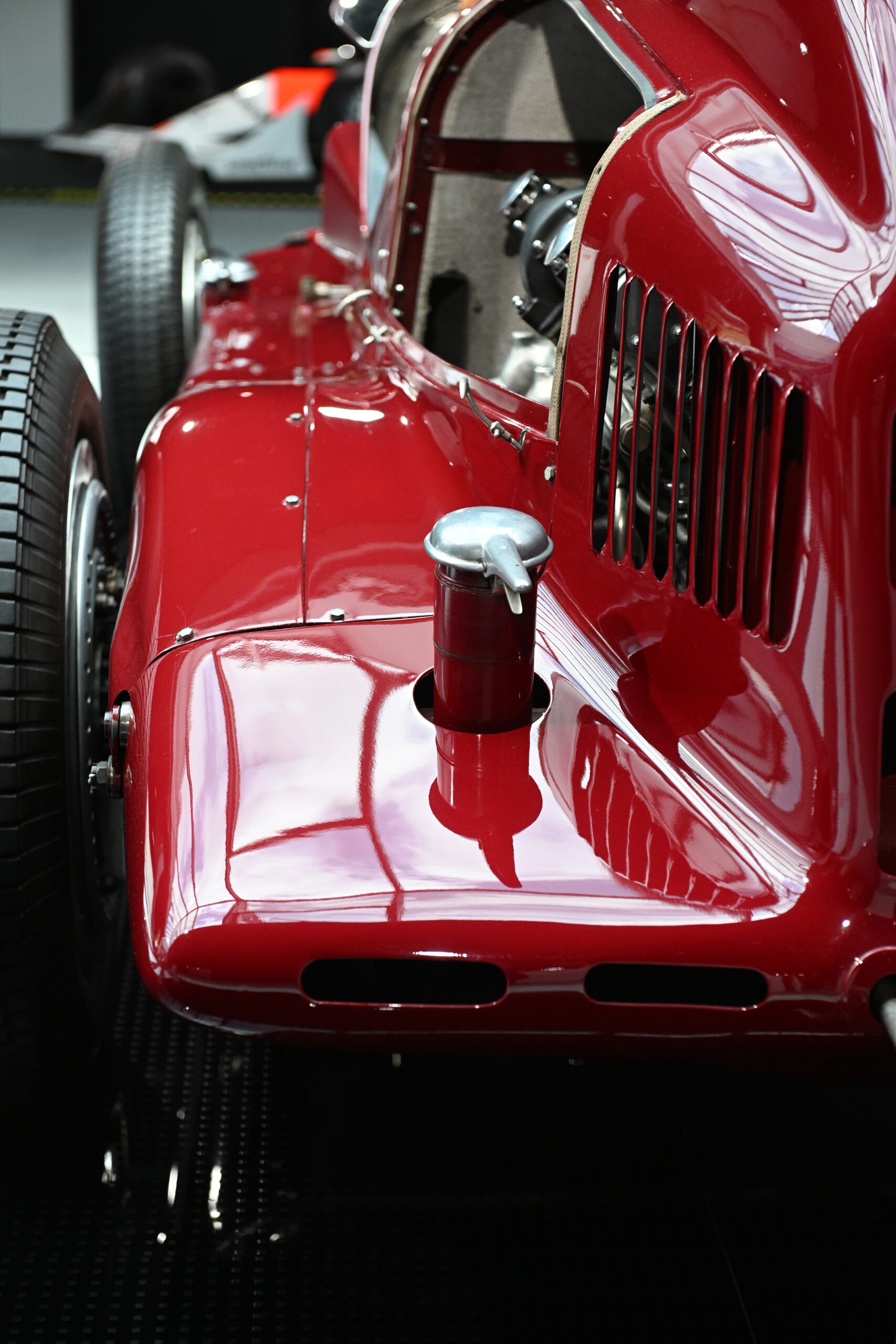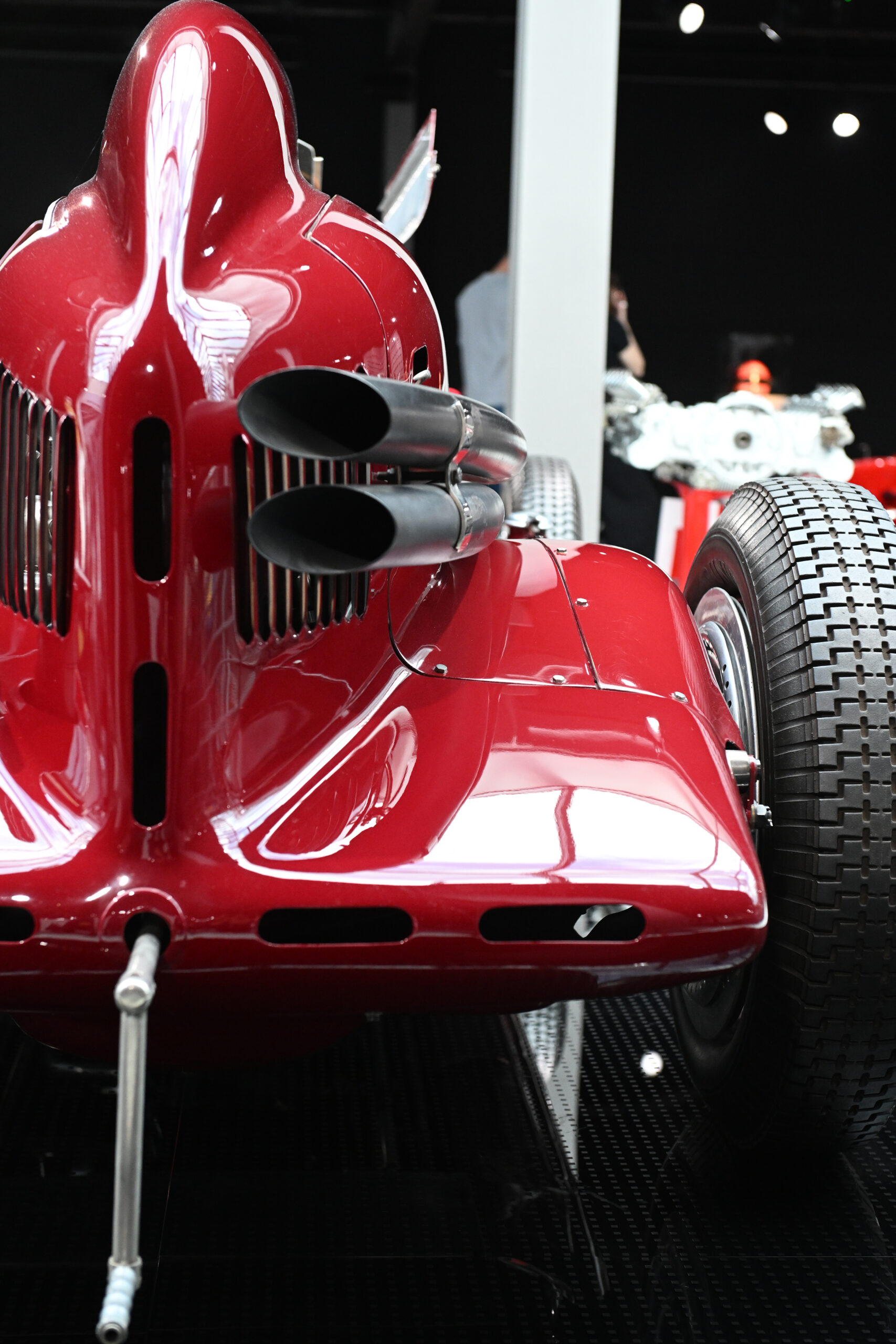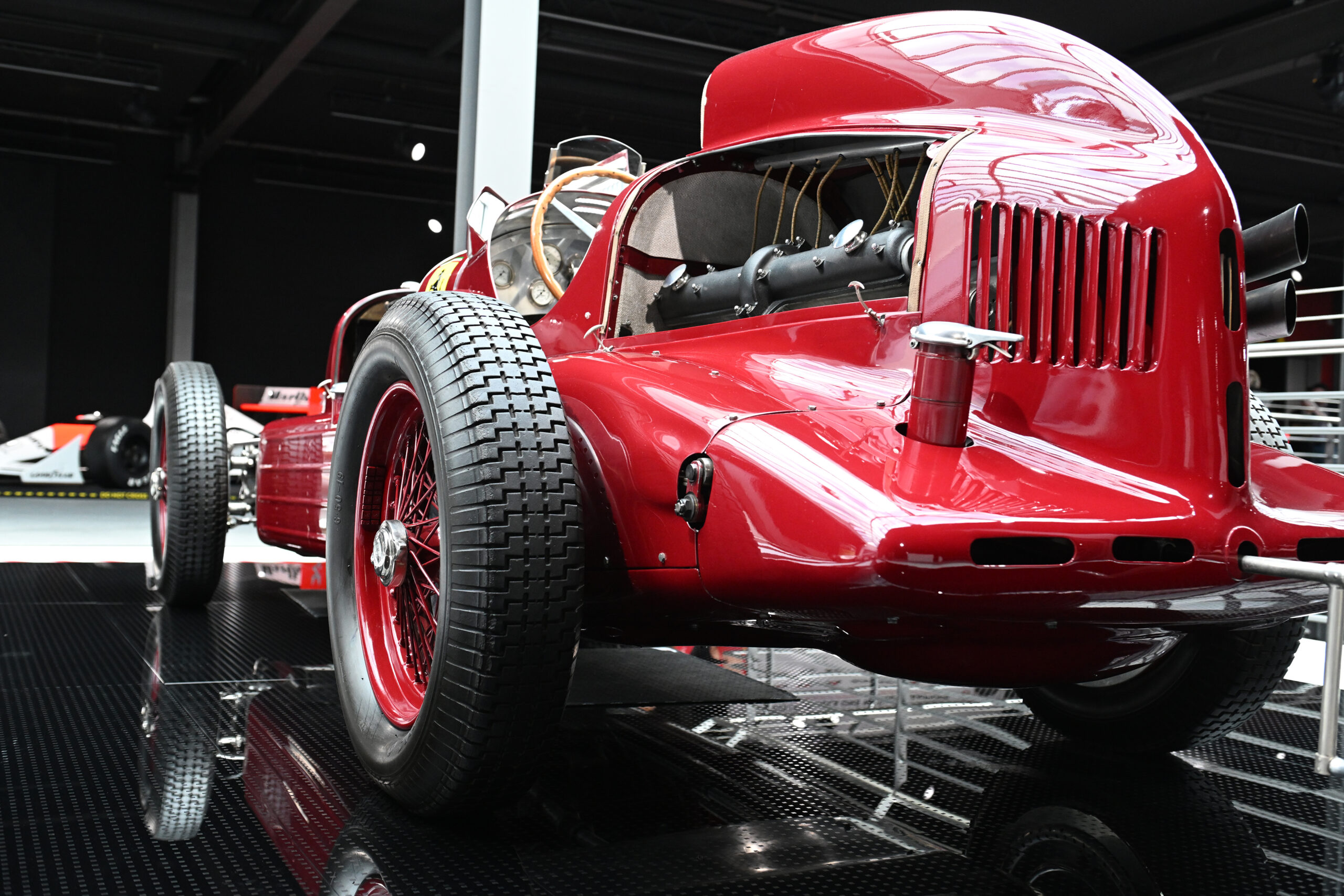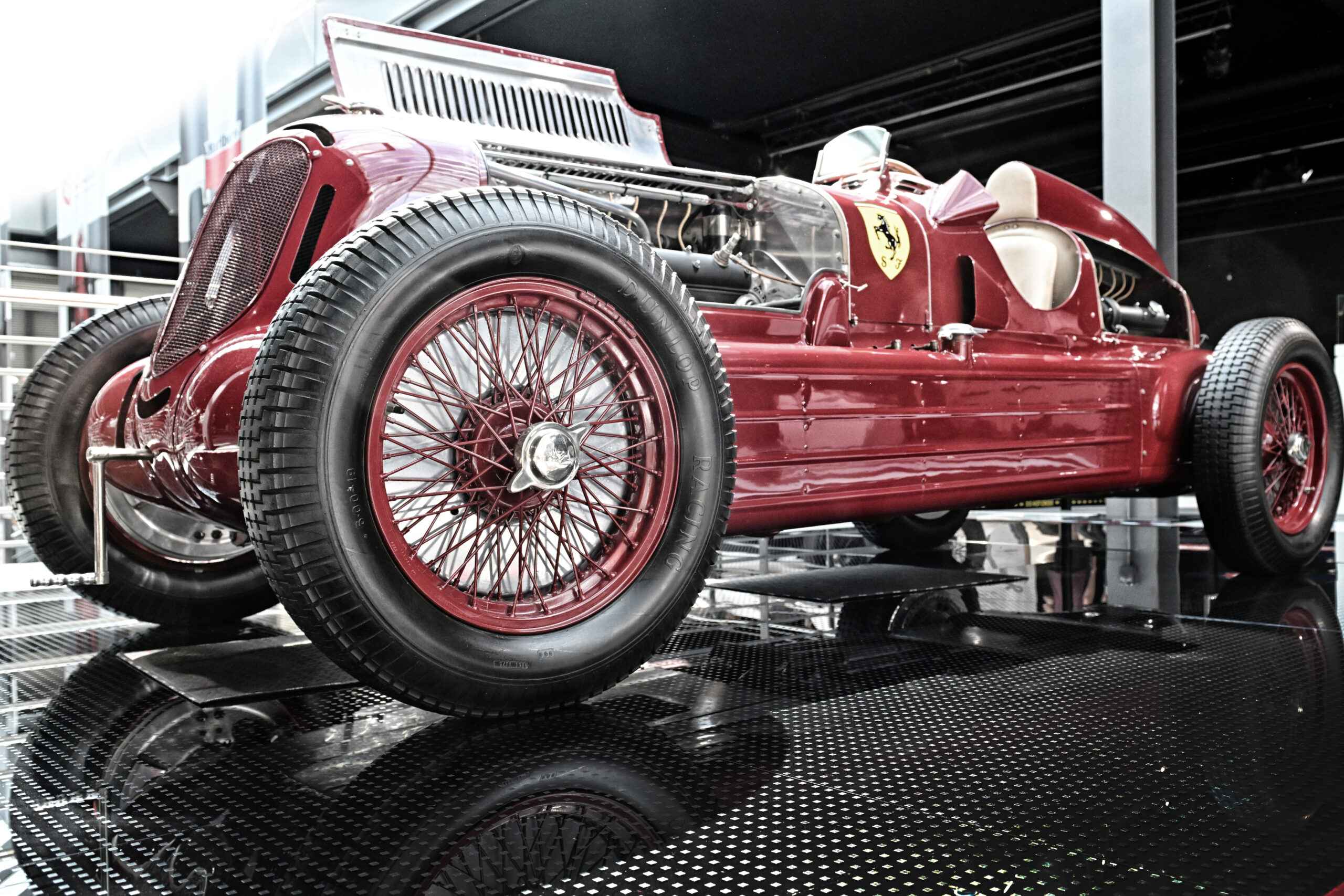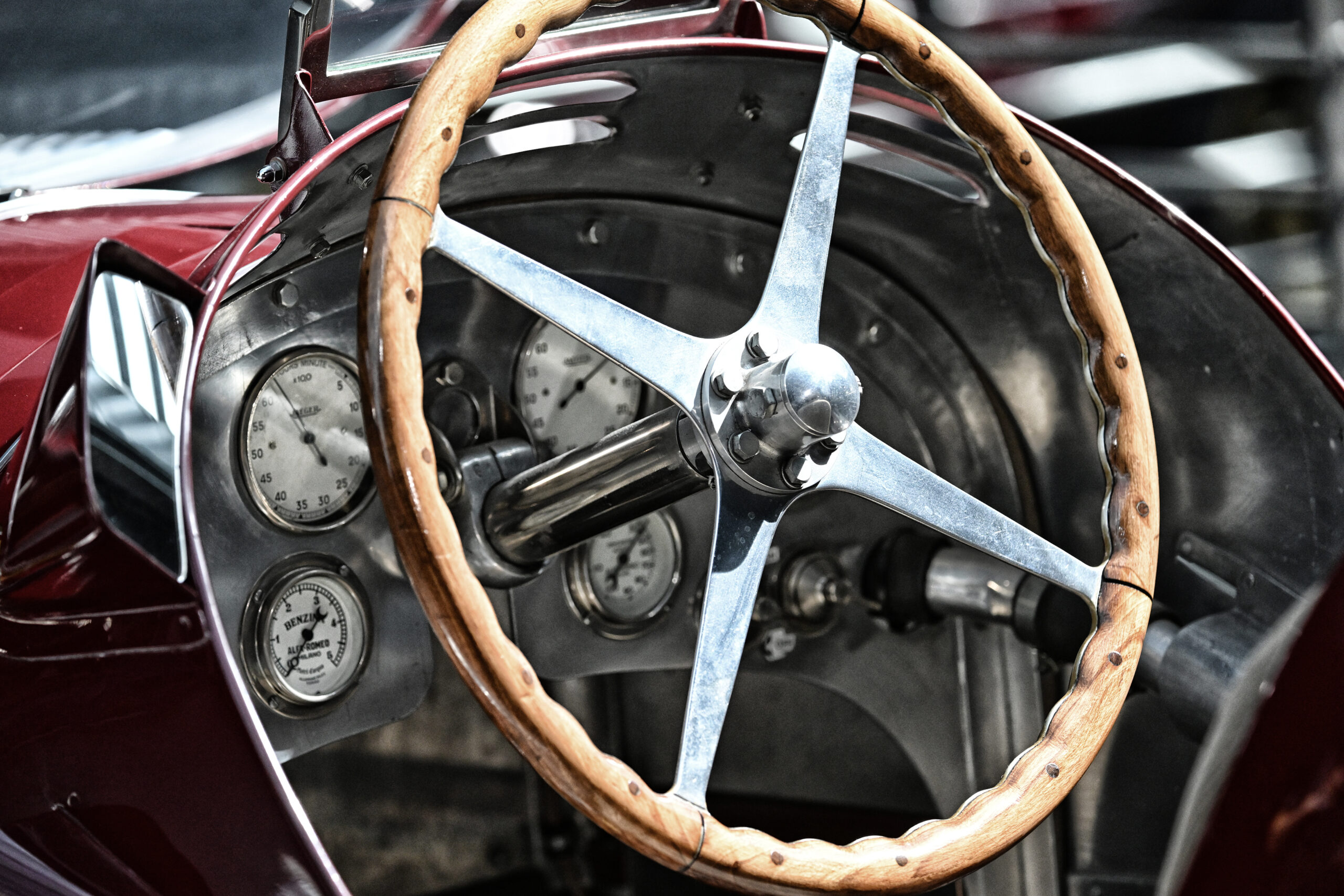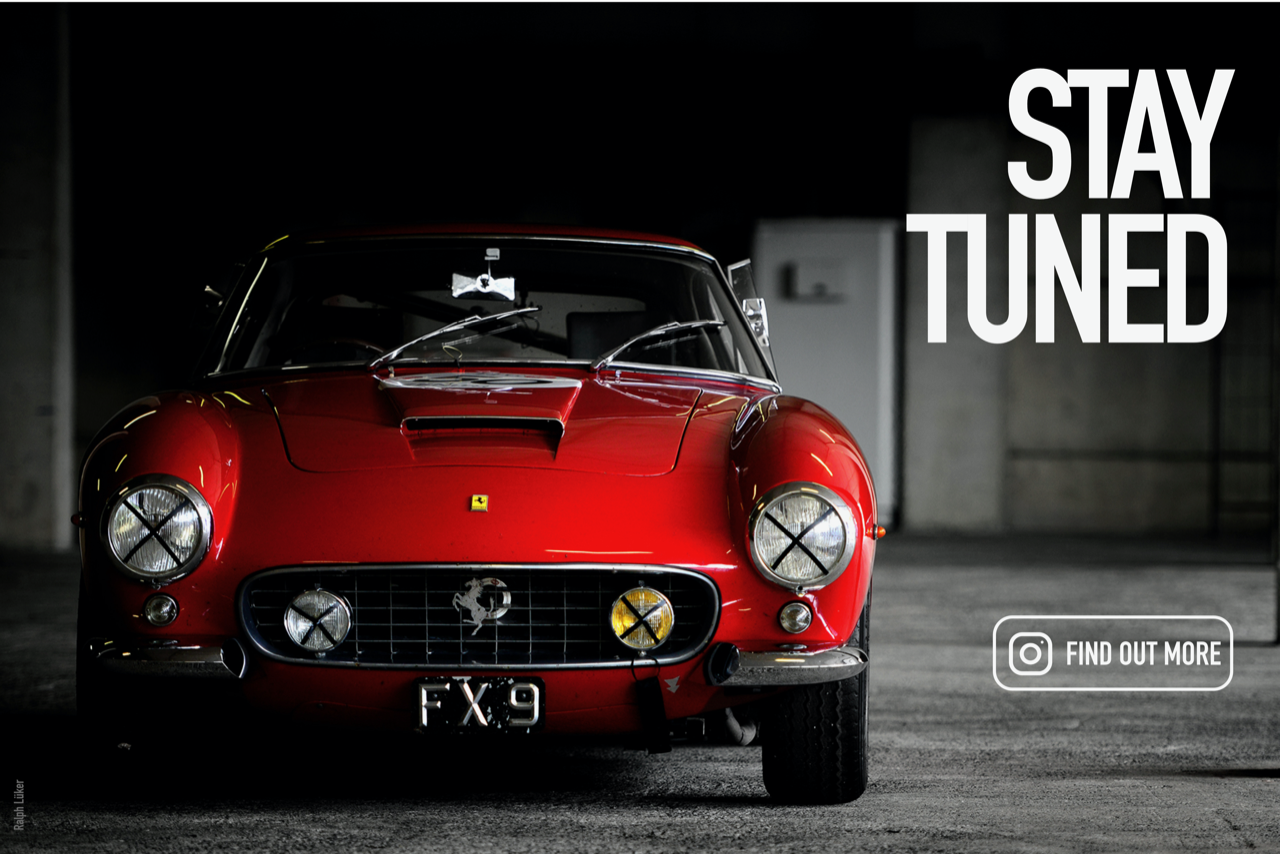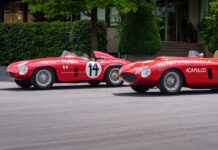There have been and continue to be a wide variety of ideas for making Grand Prix racing cars faster. While the focus was initially on pure engine power, over the years drivability and balance, lightweight construction, aerodynamics and reliability have also become important factors. An accompanying aspect, triggered above all by the persistence of Sir Jackie Stewart, was safety.
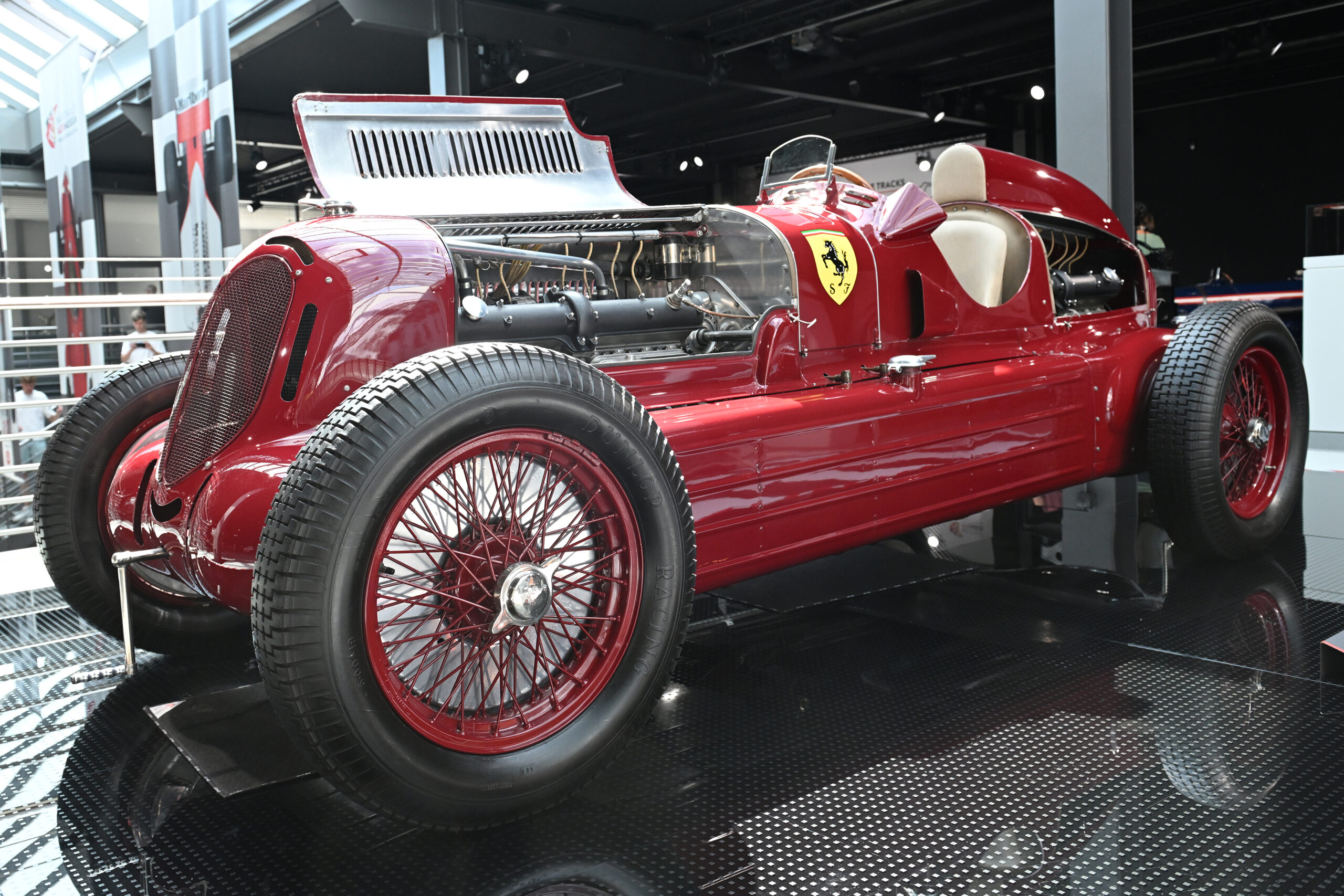
At the beginning of the 1970s, the race tracks were first improved and then, little by little, the passive safety of the racing cars was also increased. Fire was the biggest challenge, but so were the ever-increasing speeds of the Formula 1 racing cars, which were very delicate in construction at the time.
But now to the actual subject of this story, the 1935 Alfa Romeo 16C Bimotore. An extraordinary vehicle in every respect. It was built at the time by Scuderia Ferrari and was intended to rival the Silver Arrows. At the international ‘AVUS Race’, a certain Bernd Rosemeyer made his racing debut in an Auto Union Type A. To provide even more spectacle for the 300,000 spectators at the track, this race, which did not count towards the European Championship, was held under ‘Free Formula’ conditions. This meant that there were no restrictions on the participating racing cars. A total of 21 GP cars lined up at the start in Berlin at the Avus.
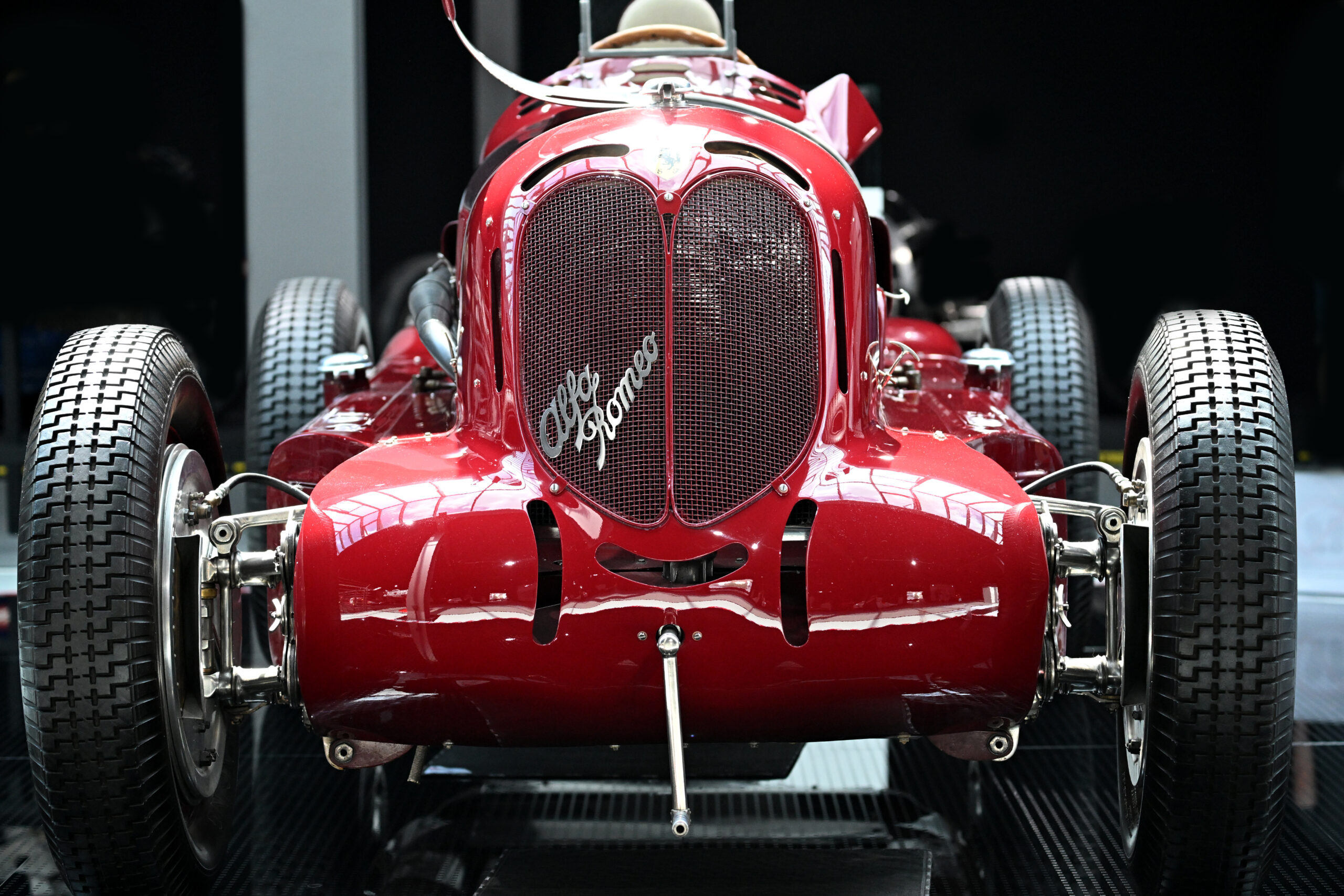
Alfa Romeo brought two true ‘monsters’ to the starting line. The Type 16C actually had 16 cylinders, but these were distributed across two inline eight-cylinder engines. One engine was located under the long bonnet. The second was positioned directly behind the driver in the rear of the car.
While the competition from Mercedes and Auto Union had between 350 and 375 hp, the Alfa Romeo 16C had an incredible 540 hp. Enzo Ferrari put his best drivers, Tazio Nuvolari and Louis Chiron, in the two ‘Bimotore’ cars that were ever built. For the first time, the starting grid was determined based on the lap times achieved previously. It was clear to all participating drivers that the tyres would play a decisive role. The tyre designs of the 1930s were not designed for such speeds, resulting in many tyre failures during the weekend. In the end, Louis Chiron managed to finish second in the main race; he would probably have needed just one more lap to win.
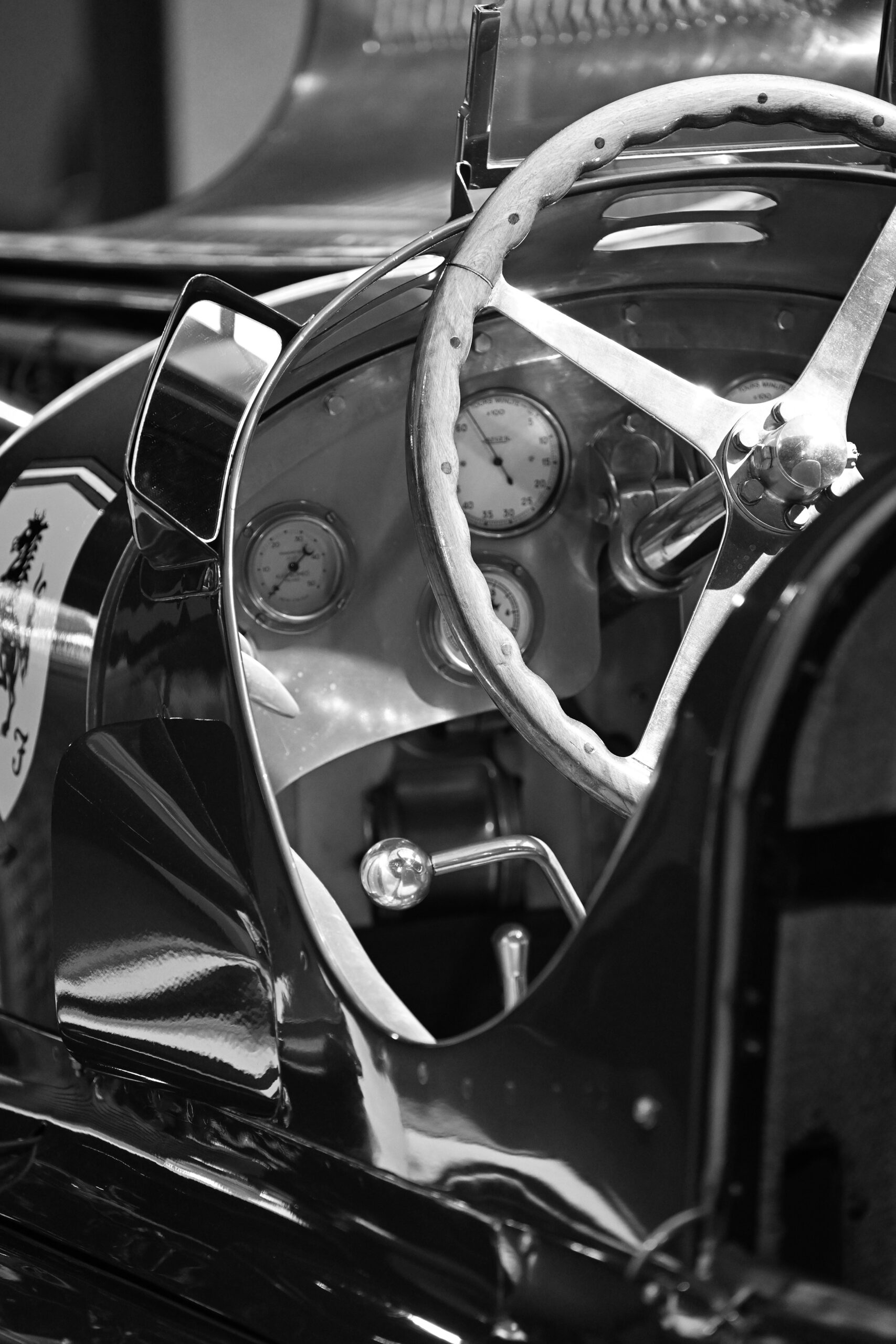
The Alfa Romeo 16C Bimotore is also a milestone in the history of Scuderia Ferrari. It is the first racing car to be built there and also the first car to be adorned with the ‘Cavallino Rampante’ (prancing horse) emblem.
The idea of using a second engine to ‘simply’ increase performance was by no means new. Alfa Romeo had also tried this version with the Type A, but the two six-cylinder engines were mounted side by side at the front.
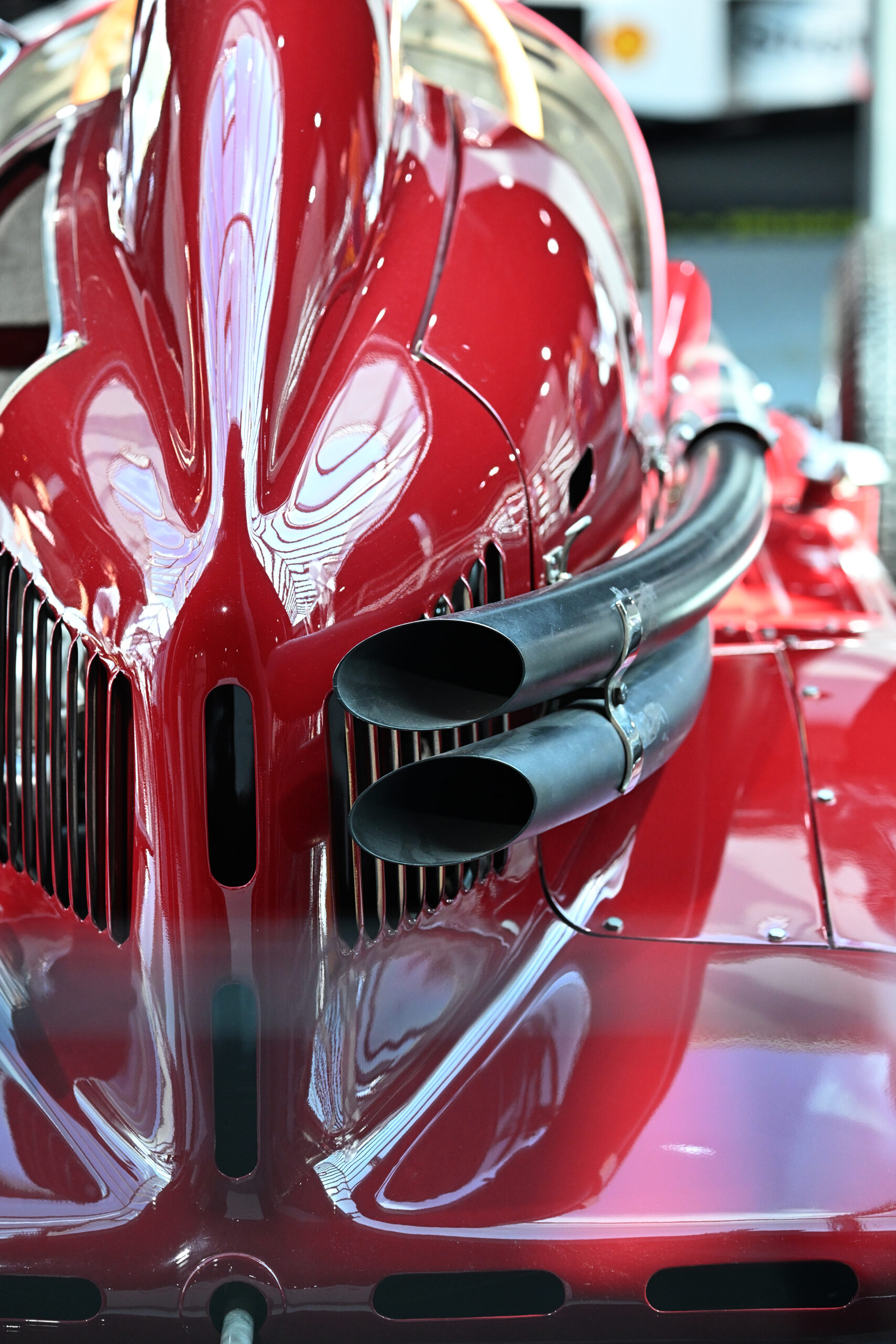
The 16C is an almost uncontrollable horsepower monster. It has two supercharged eight-cylinder in-line engines with a three-speed transmission. The gear lever is located between the driver’s legs, a position that was not uncommon at the time. The front engine is locked to the transmission and differential, while the rear engine can be temporarily disengaged via a clutch. Power is transmitted via two drive shafts that rotate under the driver’s seat.
As mentioned at the beginning, only two examples were built by Ferrari, one with two 2904 cc engines and one with two 3165 cc engines. The 5.8 litre engine produced 510 hp, while the 6.3 litre engine produced an impressive 540 hp. The two 16Cs are always the most powerful racing cars on the starting grid, but at 1030 kg they are also significantly heavier than their German competitors.
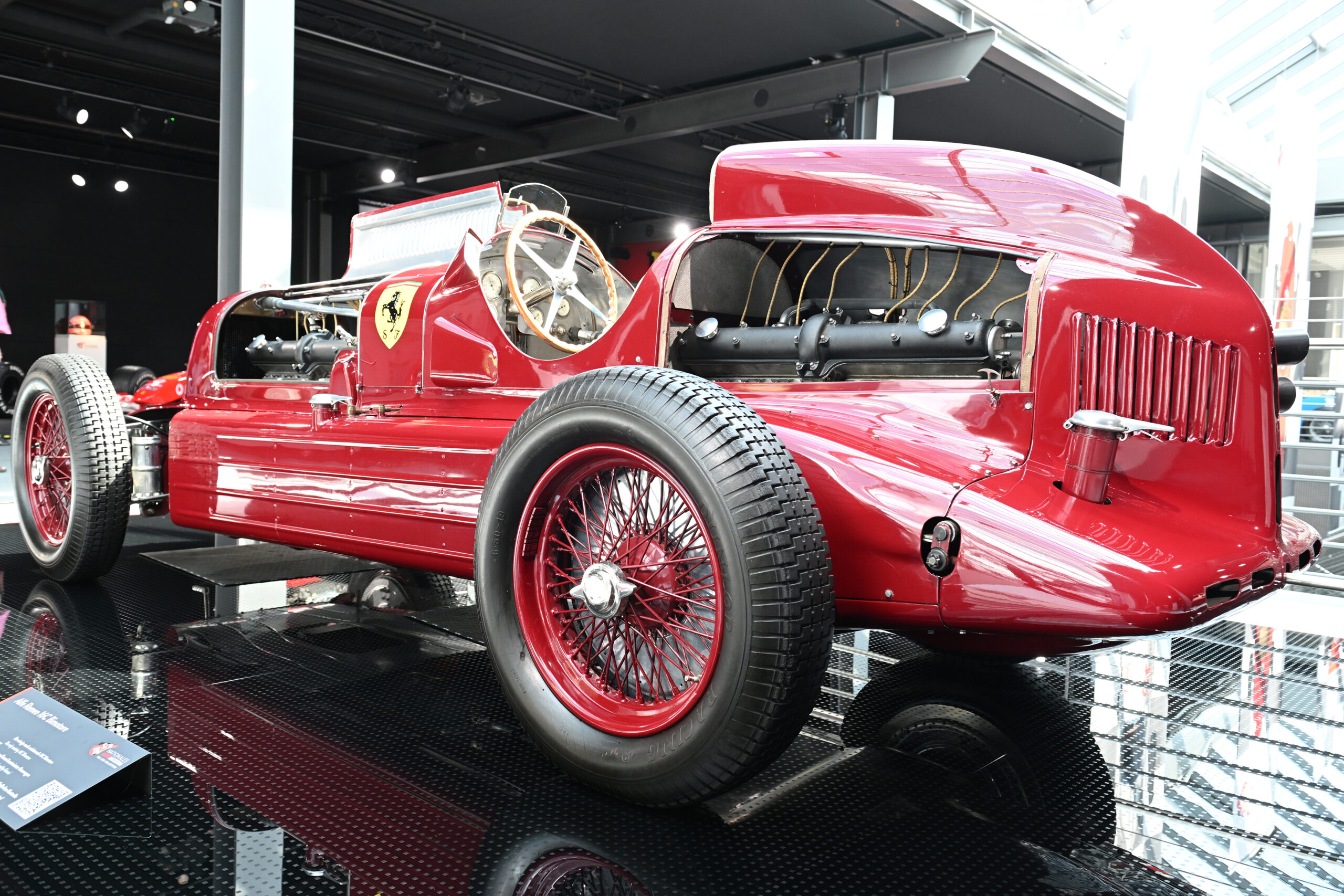
A new feature of this Alfa Romeo is the independent suspension. However, the car has a very high centre of gravity, which leads to extreme tyre wear. In addition, these two powerhouses consume a lot of fuel, which is stored in two large 120-litre tanks on the sides between the wheels.
After it became clear that this Alfa Romeo was not suitable for circuit racing and the team returned to the more mature P3, Scuderia Ferrari made a few more record attempts with Tazio Novulari at the wheel, where the more powerful of the two Alfa’s reached a top speed of 364 km/h. For me, this is an unimaginable speed, especially in such a racing car.
Only one of the two 16Cs survived the test of time and, after an eventful history with various owners, is now an important part of the Loh Collection. Just to see this elemental force from Alfa Romeo is worth a visit to the National Automobile Museum in Dietzhölztal. The Alfa Romeo 16C, which is on display in the factory’s own Museo Centro Storica, is a replica built in the 1970s.
